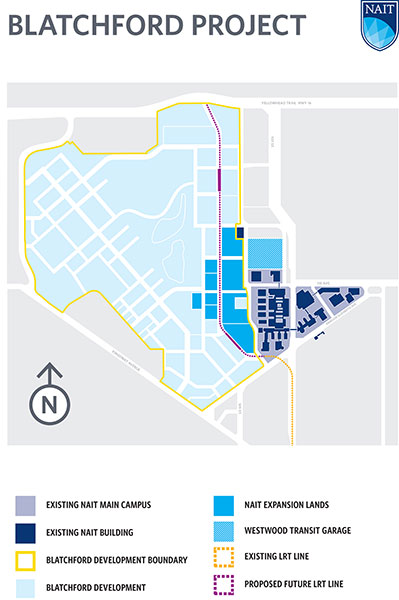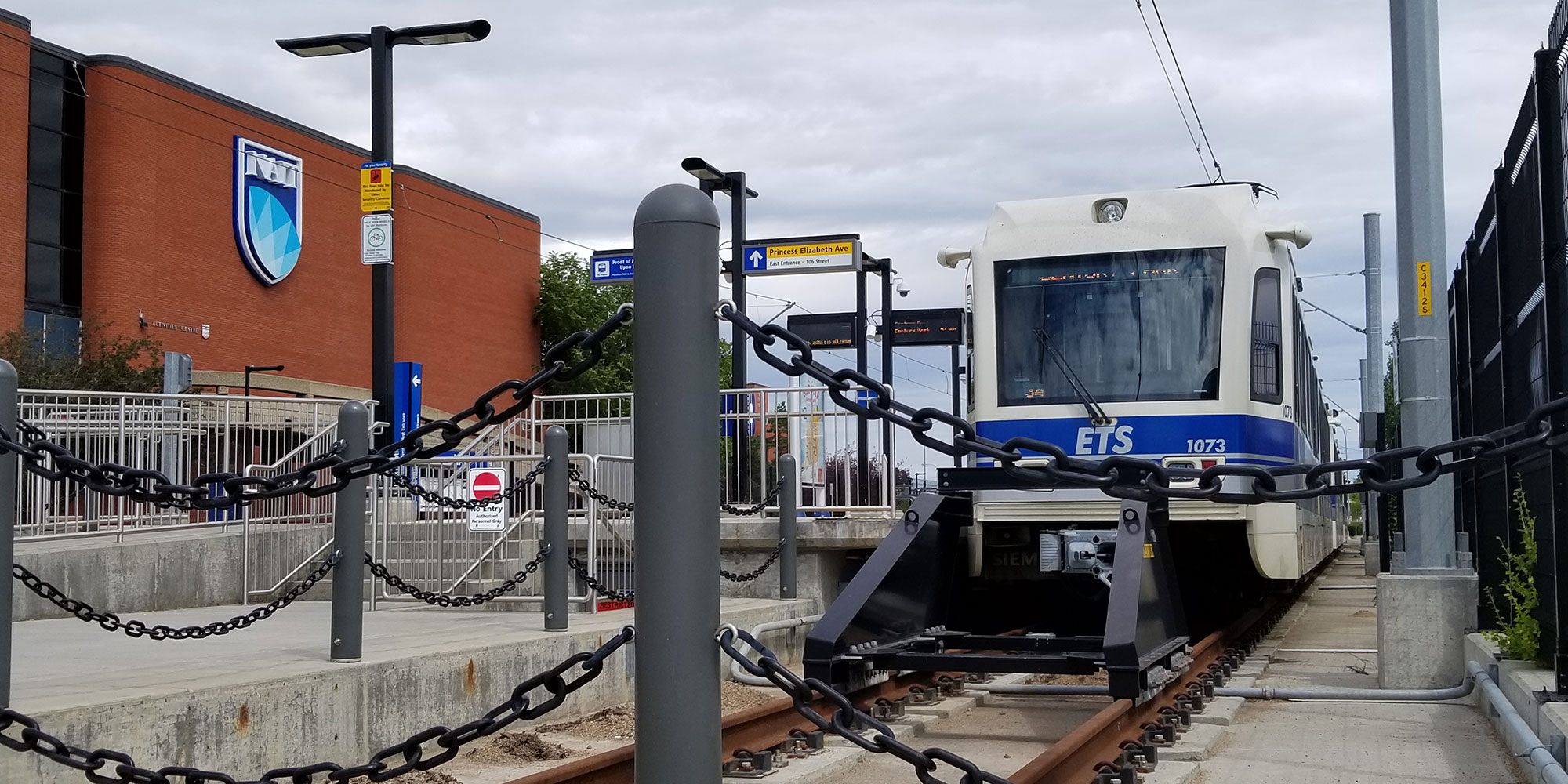Project presents unprecedented possibilities for polytechnic
On June 8, construction began on another major stage of development of Edmonton’s LRT network, with the activity focused around NAIT.
Situated on the southwest corner of Main Campus, NAIT Station is the terminus of the Metro Line, a 3.3-kilometre stretch from Churchill Station downtown. By 2025, it will serve as the southern gateway to the new community of Blatchford and, ultimately, a connection to the city of St. Albert, 21 km northwest.
The new tracks will run through the polytechnic’s former soccer field (the Ooks will resume play in 2021 at a yet-to-be determined location). Adjacent to the field, the south entrance of 109 Street (off Princess Elizabeth Avenue) will be closed to accommodate the train, though the road will be realigned for use from 118 Avenue, to the north.
This realignment is part of the work slated for the 2020 construction season, which also includes related underground utility work at Blatchford.
“While all that’s happening, access to NAIT parking and buildings from 109 Street will be maintained,” says John Engleder, NAIT’s associate vice-president of special projects.
In the long term, the LRT project is a key part of the polytechnic’s sustainable development and growth. Years before the train rolls into the station at St. Albert, it’s expected to significantly, and positively, alter the campus’s landscape and culture.
Stronger communities through public transit
In 2025, NAIT arrivals and departures will occur at a new location. The existing station will be moved slightly west of today’s campus and into a district that will be known as Blatchford Market, home to shops, high-density housing and gathering places. This will also locate the station closer to a future residence for the polytechnic at Blatchford.
“The current station was always planned to be temporary,” says Engleder. Its next incarnation will be expanded to accommodate five cars (up from three), bringing it in line with each new station to come.
Tom Lumsden, City of Edmonton development manager for Blatchford, sees the NAIT/Blatchford Market station and line extension as not just sustainable connections between the area and points north and south, but as connectors of campus and the new community.
“The LRT, NAIT and Blatchford can all work hand in hand in terms of giving people the opportunity to walk and play and learn and grow,” he says. “I really think of [it as] one community.”
Future students will enjoy similar benefits, according to Jason Roth, advocacy director at the NAIT Students’ Association.
With an expanded LRT network, “You could live and study at NAIT and you would never need a car,” he says. The increased ease of access, he adds, would also have a “transformative” impact on campus culture and on the sense of community among students.
“It will be a 24/7 campus life – not a 7-a.m.-to-4-p.m. campus life.”
A busier, greener, denser campus
 Throughout 2019, NAIT Station saw 5,795 boardings and alightings. In 20 years, the extension could attract 17,600 riders daily. Opening day alone could see 8,000.
Throughout 2019, NAIT Station saw 5,795 boardings and alightings. In 20 years, the extension could attract 17,600 riders daily. Opening day alone could see 8,000.
In time, this will serve a larger campus. Recently, NAIT acquired the former Westwood transit garage to the north on 106 Street and more than 16 hectares at Blatchford. With this, the footprint of Main Campus could eventually double in size. Its parking lots, however, will not.
“It was a big focus for us to have less cars coming to NAIT,” Engleder says regarding long-term development plans for campus.
“It was a big focus for us to have less cars coming to NAIT.”
“The LRT fits that perfectly. We want to be green. We want to reduce greenhouse gases, and private automobiles are a big part of that.”
At full buildout, the Metro Line extension is expected to eliminate 1,300 tonnes of GHGs per year, or the equivalent of roughly 280 vehicles annually.
Possibly, this could lead to a denser campus, even as its physical footprint expands. With fewer vehicles, Engleder adds, there could be less need for current surface parking lots in the future, freeing them up for better uses.
“Wherever you park a car, you can’t do much more with that space.”
At the moment, what exactly would be done with such spaces is unknown. What’s clear, however, is that the LRT extension presents unprecedented possibilities to NAIT’s staff, students and the surrounding community.
“It’s difficult to quantify those benefits in 2020, but [they] will be far-reaching come 2030,” says Roth. “The long-term gain is very hard to overestimate.”
